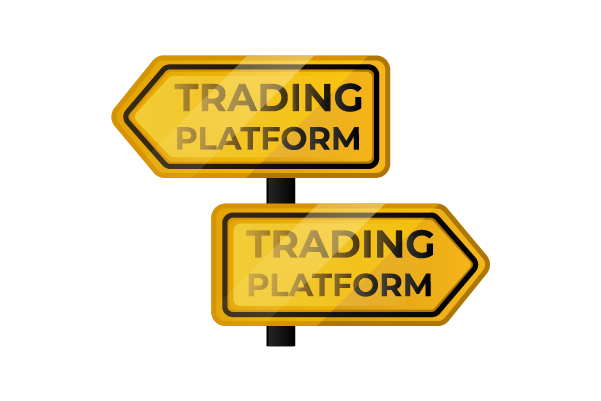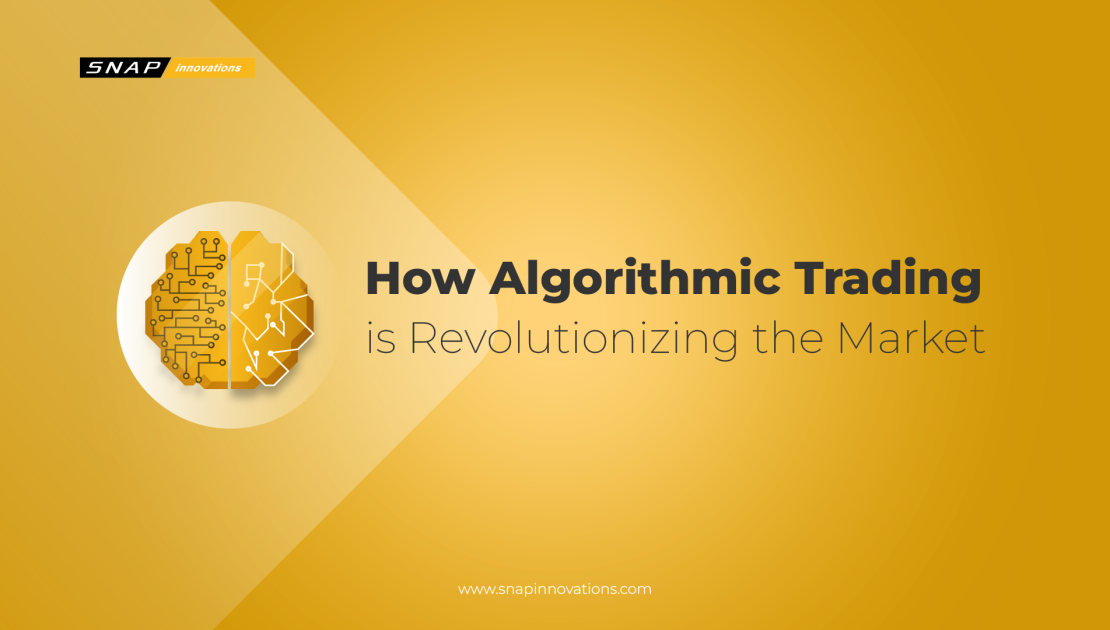In today’s fast-paced financial world, the term ‘automated trading platform’ has become more than just a buzzword; it’s a transformative tool that’s reshaping the very essence of trading. These platforms, driven by intricate algorithms, offer traders a unique blend of speed, accuracy, and efficiency, allowing them to navigate the volatile waters of the financial markets with enhanced precision.
An Automated Trading Platform, at its core, is a computerized system designed to execute trades without the need for human intervention. By operating on predefined rules or algorithms, these platforms can analyze vast amounts of market data, identify potential trading opportunities, and act on them in real-time. This automation not only eliminates the emotional pitfalls that many traders face but also ensures that trading strategies are applied consistently, regardless of market conditions.
What is an Automated Trading Platform?
 An Automated Trading Platform, often referred to as an algorithmic trading platform or system, is a computer program designed to execute trades in the financial markets without human intervention. It operates based on a set of predefined rules or algorithms. These rules can range from simple conditions, like moving average crossovers, to more complex strategies involving multiple indicators and logical conditions.
An Automated Trading Platform, often referred to as an algorithmic trading platform or system, is a computer program designed to execute trades in the financial markets without human intervention. It operates based on a set of predefined rules or algorithms. These rules can range from simple conditions, like moving average crossovers, to more complex strategies involving multiple indicators and logical conditions.
Read Next: 5 Best Crypto Futures Trading Platforms in 2023
The primary goal is to identify profitable trading opportunities, execute them efficiently, and potentially manage them by adjusting stop losses or taking profits based on the evolving market conditions. By automating the trading process, these platforms aim to enhance consistency, reduce emotional decision-making, and increase the speed of trade execution.
The Rise of Automated Trading Platforms
The evolution of trading has always been intertwined with technological advancements. From the bustling trading floors of Wall Street to the digital platforms of today, the journey has been nothing short of remarkable. Automated trading platforms emerged as a response to the increasing complexity of financial markets. These platforms, powered by intricate algorithms, can execute trades at lightning speeds, often in fractions of a second.
The beauty of these platforms lies in their ability to analyze vast amounts of data, identify patterns, and make decisions based on predefined criteria. This not only eliminates human error but also ensures that trading opportunities are never missed. Furthermore, with the rise of machine learning and artificial intelligence, these platforms are continually evolving, adapting to market changes in real-time.
Benefits of Using an Automated Trading Platform
 1. Efficiency and Speed
1. Efficiency and Speed
In the world of trading, timing is everything. Automated trading platforms are designed to execute trades at unparalleled speeds, often in mere milliseconds. This rapid execution ensures that you get the best possible price for your trade, especially in fast-moving markets where prices can change in the blink of an eye. The efficiency of these platforms also means that they can monitor multiple markets or assets simultaneously, ensuring no opportunity is missed.
2. Emotionless Trading
One of the most significant challenges traders face is managing their emotions. Fear of losses can prevent a trader from executing a trade, while greed can lead to holding onto a position for too long. Automated platforms operate based on logic and data, ensuring that trades are executed as per the strategy without being influenced by emotions. This results in more consistent and rational trading decisions.
3. Diversification
Automated trading platforms provide an excellent opportunity for diversification. They can manage multiple accounts and execute various strategies simultaneously. This means you can spread your investments across different assets or markets, reducing the risk associated with putting all your eggs in one basket. Diversification, when done right, can lead to more stable returns and a reduction in overall portfolio risk.
4. Backtesting Capabilities
One of the standout features of automated trading platforms is the ability to backtest trading strategies. Backtesting involves applying your trading strategy to historical data to see how it would have performed. This provides invaluable insights, allowing traders to fine-tune their strategies, understand potential drawdowns, and get a realistic expectation of potential profitability.
5. Reduced Costs
Automated trading can lead to reduced costs in the long run. Since the platform can monitor markets 24/7 without the need for constant human oversight, traders can save on costs associated with manual trading, such as hiring additional personnel or spending extended hours monitoring the markets.
6. Consistency
One of the challenges with manual trading is ensuring consistency, especially when faced with a series of losses. An automated platform, however, will consistently execute the predefined strategy, ensuring that the rules are followed to the letter, regardless of previous outcomes.
Potential Drawbacks and Considerations
While the allure of automated trading platforms is undeniable, it’s essential to approach them with a balanced perspective. Firstly, no system is infallible. Even the most sophisticated algorithms can’t predict unforeseen market events or black swan occurrences.
Moreover, there’s a risk of over-reliance. While these platforms can handle most tasks autonomously, human oversight is crucial. It’s essential to understand the underlying algorithms and strategies to ensure they align with your investment goals.
Lastly, technical glitches and malfunctions can occur. Ensuring you have a reliable platform and backup systems in place is paramount to safeguard against potential losses.
How to Choose the Right Automated Trading Platform
 1. Research and Reputation
1. Research and Reputation
Begin your journey by thoroughly researching various platforms available in the market. Look for platforms that have been around for a while and have garnered positive feedback from users. User reviews, expert opinions, and industry awards can provide valuable insights into a platform’s reliability and performance. Remember, a platform’s reputation in the trading community is often a testament to its efficacy.
2. Ease of Use
The best platforms strike a balance between comprehensive features and user-friendliness. Whether you’re a beginner just dipping your toes into the world of trading or a seasoned professional, the platform should be intuitive and easy to navigate. A clean interface, clear instructions, and responsive customer support can make your trading experience smooth and enjoyable.
3. Customizability and Flexibility
Every trader has a unique strategy, and the platform should be adaptable to that. Ensure that the platform allows for customization of algorithms, indicators, and other trading tools. Some platforms even offer a scripting language for users to design their unique trading strategies. This flexibility can be invaluable as your trading needs evolve.
4. Security
In an age where cyber threats are rampant, the security of your financial data and assets cannot be overstated. Ensure the platform employs state-of-the-art encryption techniques, two-factor authentication, and other advanced security measures. Additionally, check if the platform has a history of security breaches and how they were handled.
5. Backtesting and Simulation
Before diving into live trading, it’s crucial to test your strategies. Platforms that offer robust backtesting tools allow you to simulate trades using historical data, giving you a clearer picture of potential profitability and areas that need tweaking. Some platforms also offer paper trading or demo accounts, enabling you to practice without risking real money.
6. Cost and Fees
While it’s tempting to go for the cheapest option, it’s essential to understand the fee structure. Some platforms charge a one-time purchase fee, while others might have monthly subscriptions or commission-based structures. Ensure you’re getting value for your money and that there are no hidden costs.
Read Next: Market Connectivity on Trade and Investment
7. Integration and Compatibility
If you use other tools or software for analysis, ensure that the platform can integrate seamlessly with them. Additionally, check if the platform is compatible with different operating systems and devices, especially if you plan to trade on the go.
8. Educational Resources and Community
Especially for beginners, platforms that offer educational resources, tutorials, webinars, and an active community can be a boon. Engaging with fellow traders, sharing strategies, and learning from experts can significantly enhance your trading journey.
Conclusion
The world of automated trading platforms is vast, offering a plethora of opportunities for those willing to embrace the power of algorithmic trading. While they come with their set of challenges, the benefits, when harnessed correctly, can be game-changing.
In the ever-evolving landscape of finance, staying updated and leveraging the latest technologies is the key to success. Automated trading platforms, with their blend of speed, accuracy, and efficiency, are undoubtedly a significant step in that direction. Embrace the future, and let the algorithms guide your trading journey.

